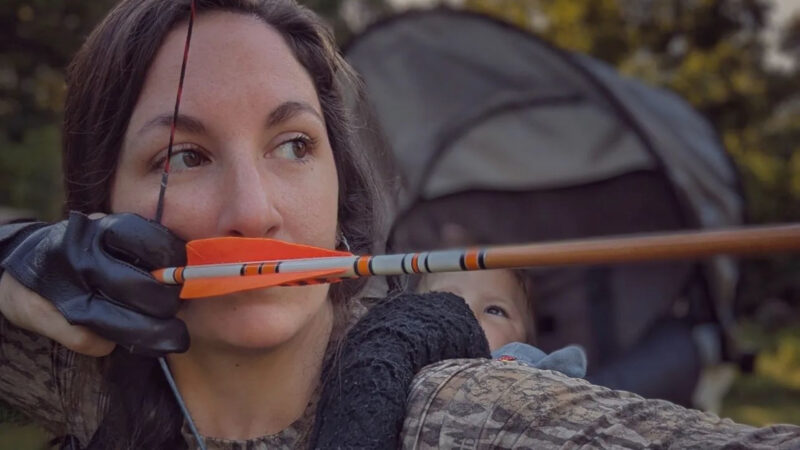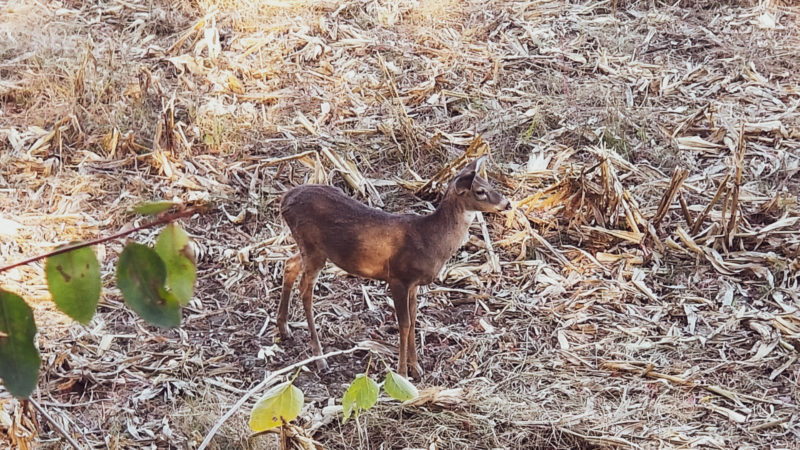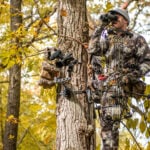“Bowhunting is a game of how close, not how far.”
This quote from Barry Wensel accurately sums up what the very core of bowhunting is. Hunting with a bow and arrow is about bringing the animals in close to you before taking your shot. It’s what sparks the rush of adrenaline and what keeps us coming back for more. As someone who hunted with a gun for years before picking up a bow, I was used to taking further shots with ease – having my accurate yardage decrease was a learning curve.
My first year of bowhunting, I missed a deer due to misjudging yardage and it being too far. However, I persevered and redeemed myself later that year, and since then I have become adept at judging yardage and figuring out what shots are too far and what shots are ethical.

Currently wondering if you are taking shots that are too far?
If you are questioning it, it tends to be a pretty good sign that you are in fact stretching your accurate distance with a bow and arrow.
The hardest part of taking far shots is admitting that you are in fact, taking far shots. The signs will be there, and fairly easy to identify.
If you are consistently missing shots, there is a good chance that you need to rein in your yardage. Sure, you can miss chip shots and shots at a close yardage — it happens to the best of us. Bad days are a fact of life, and that translates to shooting. However, consistenly missing shots is a different story and means you need to step back and take a look at the bigger picture.
Similarly, if you are consistently wounding deer or other wild game animals, this is also a reality check. Taking a chance on a wild animal at a yardage that is too far, translates to a shot that is also unethical. As a bowhunter, ethics should be a large part of how we practice and hunt, and simply “sending it” and hoping for the best isn’t something that should happen.
If your target looks tiny, there is a good chance you need to refrain from shooting. Binoculars aren’t something that should be involved in your shot process when it comes to bowhunting, and you should be able to clearly see your target and the exact spot that you want your arrow to penetrate. If you can’t settle your pin on the animal’s body, or if your pin seems to cover most of the animal while you’re trying to line up your shot, that’s also a telltale sign that you are well out of your effective and ethical range.
Doubting your own ability to make a shot can also be a telltale sign that you are stretching the yardage to the point of inaccuracy. While we all have moments of wavering confidence while hunting, there is also often a reason that doubt creeps in. If you think that the shot is too far for you to accurately make, you’re probably right.
Lastly, you might want to reconsider if you are making a shot that’s further than what you generally practice. It’s easy to assume that you can make a shot that is 5-10 yards further than what you practice at, but 5-10 yards is a big gap when it comes to bowhunting. It doesn’t matter if your bow is fast or you’re shooting a heavy draw weight; if it’s not a distance you practice at, don’t take the shot.

If any of these sound like you, then you may want to take a step back and reevaluate your shots. The good news is, there are a few things that you can do to change your mindset and get yourself back on track so you’re shooting an appropriate yardage for you and your bow.
If you haven’t already, investing in a good rangefinder is a great step. Over time you may not use it as often, as you will learn how to judge yardage without one. Once you’re settled into your tree stand or ground blind (or whatever you’re hunting out of), range some landmarks and make note of what is within your shooting range. Becoming good at judging yardage is extremely helpful, but something that takes time.
Don’t look at hunting scenarios the same way you look at a still target on the archery range. A live animal is completely different, and despite what you may be capable of on the range — this doesn’t always translate to the woods.

For example, an alert deer at 30 yards is not the same situation as a calm deer at 40 yards. Each shot you take at a deer will have its own variances that you’ll need to take into consideration. Shooting accuracy on paper or foam targets doesn’t always translate to the woods and hunting situations — your effective range on targets doesn’t matter.
What does matter is your effective range on a live animal, and your ability to make the ethical choice on whether or not to take the shot. This way of thinking shouldn’t change, no matter if it’s a doe to fill the freezer or the monster buck that you’ve been after all season. Taking a shot that you can accurately and confidently follow through with, and one that is within your shooting range, is what is going to give you the best outcome.
Who cares what Levi Morgan or anyone else can do with their archery equipment…it all comes down to what you can do with yours.

 By
By 



